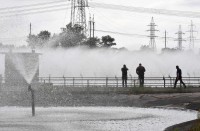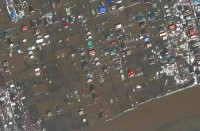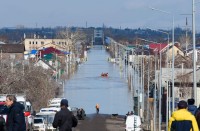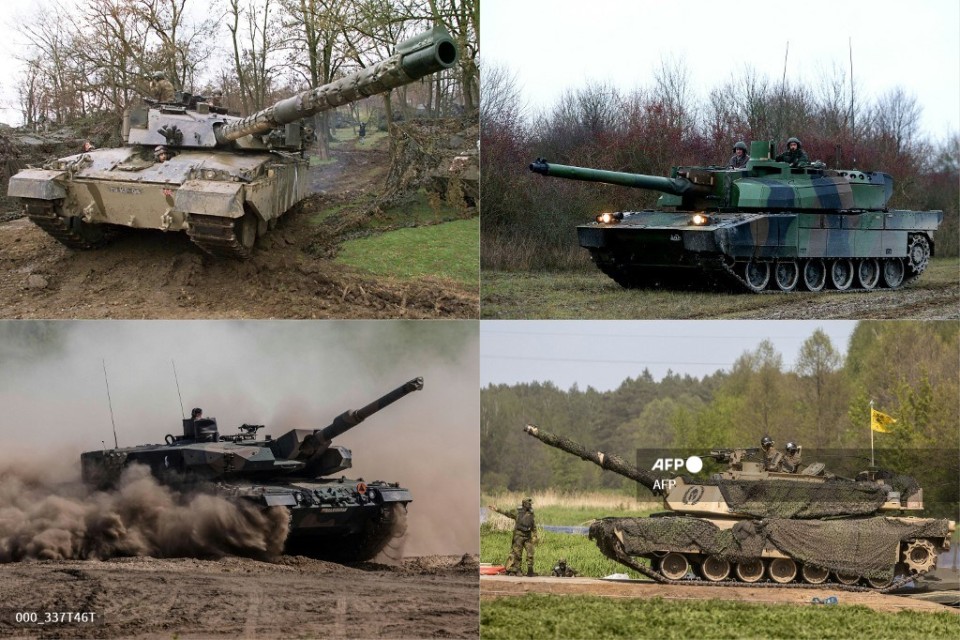
Berlin, Germany | AFP | Wednesday 1/25/2023
by Femke COLBORNE with Daria ANDRIIEVSKA in Kyiv
Berlin on Wednesday agreed to deliver powerful German-made Leopard tanks to help Ukraine repel Russia’s invasion, a decision hailed by Kyiv and NATO but slammed by Moscow as “extremely dangerous”.
President Volodymyr Zelensky thanked his German counterpart Olaf Scholz for the “important and timely” announcement, as NATO chief Jens Stoltenberg said the heavy armaments can help Ukraine win the war.
After weeks of intense lobbying for the heavy military equipment, news of their imminent supply comes as a relief for Kyiv particularly as Russian forces reported advances in Bakhmut, a town in eastern Ukraine that Moscow has been trying to capture for months.
Just northeast of Bakhmut in battle-scarred Soledar, Ukrainian troops had also withdrawn after fierce fighting, Kyiv’s military admitted.
Germany will provide 14 Leopard 2 A6 tanks from its Bundeswehr supplies, Scholz told the German parliament.
It is also granting approval for other European countries to send the German-made tanks from their own stocks to Ukraine, with the aim of quickly assembling “two tank battalions with Leopard 2 tanks for Ukraine,” he said.
Berlin will also train Ukrainian forces to use the tanks in Germany, as well as provide logistics, ammunition and maintenance for the vehicles.
“At a critical moment in Russia’s war, these can help Ukraine to defend itself, win (and) prevail as an independent nation,” said Stoltenberg.
Kyiv urged allies to now build a “tank coalition”, noting that “the first step on tanks has been taken”.
“We need a lot of Leopards,” the head of Ukraine’s presidential administration Andriy Yermak said on social media.
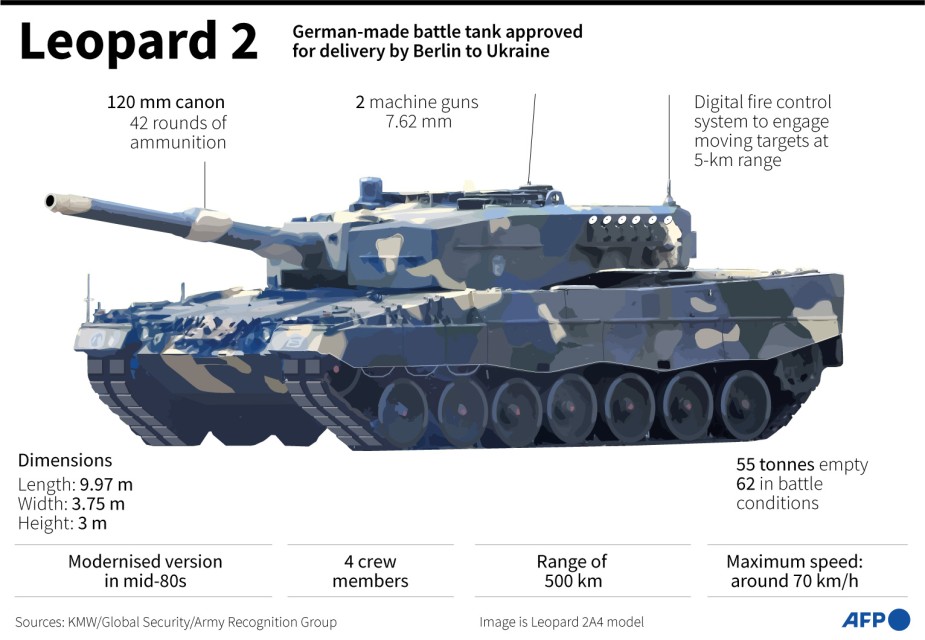
– ‘Big step’ –
While scores of nations have pledged military hardware for Ukraine in recent weeks, Kyiv has been clamouring for the more sophisticated Leopard tanks, seen as key to punching through enemy lines.
Scholz, who had faced accusations of dithering over whether to send the tanks, defended his stance during question time at parliament.
“I want to say explicitly that it was right and it is right that we did not let ourselves be pushed into this but that we rely on and also continue on close cooperation in such a matter,” he said.
Addressing fears from some quarters in Germany that the heavy armaments risked inflaming the conflict, Scholz said Berlin “must always make it clear in everything we do that we are doing what is necessary and possible to support Ukraine, but that at the same time we are preventing the war from escalating into a war between Russia and NATO”.
Other European countries including Spain and Poland have said they are ready to provide tanks.
Finland said it would join the effort, but did not specify whether it would send its own tanks or provide training.
Polish Prime Minister Mateusz Morawiecki, who had vocally sought German approval to send on the tanks, thanked Berlin for the decision and called it “a big step towards stopping Russia”.
As more pledges came in on tanks, Russia’s ambassador to Germany Sergei Nechaev warned that the “extremely dangerous decision takes the conflict to a new level of confrontation, and contradicts statements by German politicians about the unwillingness of the German Federation to get involved in it”.
The Leopard 2 is seen as one of the best-performing tank models worldwide and is widely used across Europe, meaning spare parts and ammunition can be easily obtained.
Germany did not specify the number of tanks in two battalions but for the Bundeswehr a battalion typically consists of 44 tanks.
– Abrams tanks? –
The Wall Street Journal has meanwhile reported that Washington was leaning toward sending a significant number of M1 Abrams tanks to Ukraine.
Russia’s ambassador to the United States, Anatoly Antonov, responded to the reports by saying such a move would show “the real aggressor in the current conflict”.
“If the United States decides to supply tanks, it will be impossible to justify such step using arguments about ‘defensive weapons’,” he said, according to a post on the Russian Embassy’s official Facebook page.
“This would be another blatant provocation against the Russian Federation.”
The Kremlin warned Wednesday that if Western countries supply Ukraine with heavy tanks they will be destroyed on the battlefield.
“These tanks burn like all the rest. They are just very expensive,” Kremlin spokesman Dmitry Peskov told reporters.
– Soledar withdrawal –
The Kremlin’s warning came as a Moscow-backed official said Russian forces had advanced in Bakhmut, a town in eastern Ukraine that Russia has been trying to capture for months.
The Ukrainian military also conceded to AFP that its troops had pulled out of Soledar, which Russian forces had claimed control of earlier this month.
Denis Pushilin, Moscow’s top official responsible for Donetsk, said its capture “has now made it possible to block the enemy’s supply routes and, in part, take under operational control areas” from which Ukrainians struck Russian positions.
At a position on a road between Sloviansk and Soledar, Igor, a member of the Ukrainian Territorial Defence Forces said it was the “worst fighting around Soledar,” with particularly fierce battles in recent days.
“For two or three days we lost positions but now we are working to push back to what we had before,” he said, as other members of his battalion launched a surveillance drone in the direction of the front line.
Despite the tough battles, he said morale remained high.
“We understand that if we don’t do this job, no one will come and do it.”
burs-fec/hmn/lcm
© Agence France-Presse

